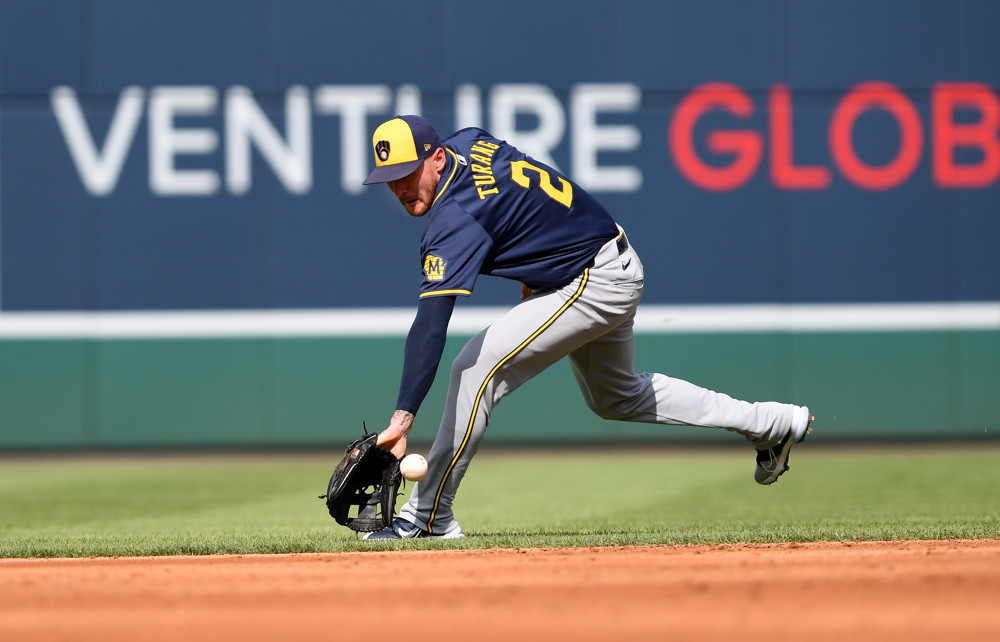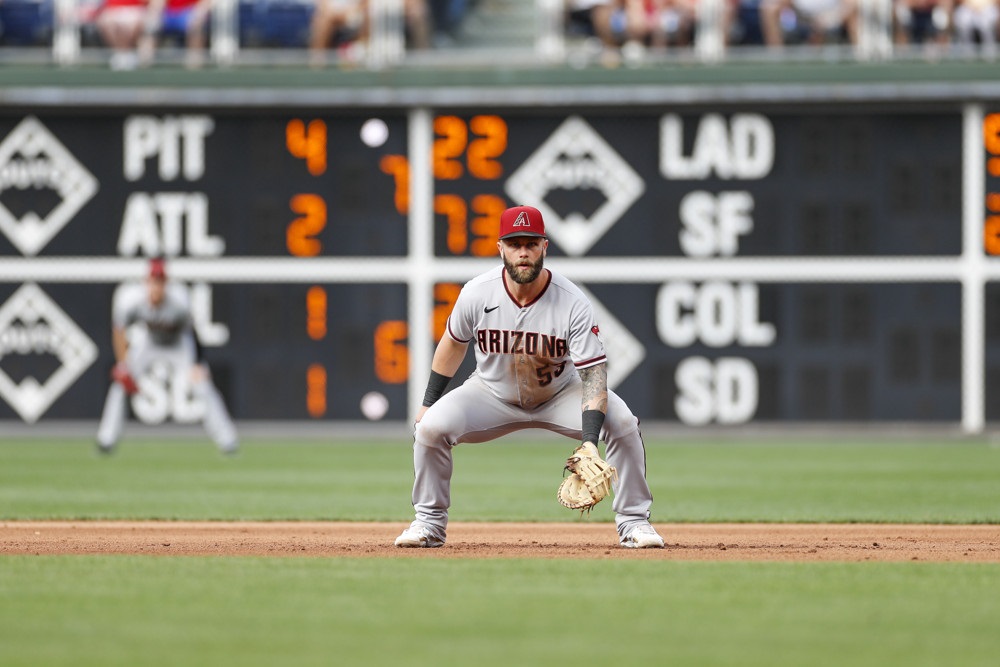Mariners outfielder Jarred Kelenic was subject to a lot of scrutiny in his rookie season given how he had been ranked among the top prospects in baseball for multiple years running.
That debut season was a challenging one in many ways. Kelenic hit .181 with a .615 OPS with 14 home runs in 93 games, though he showed positive signs at season’s end, posting an .829 slashline in his last 33 games.
But Kelenic’s defensive performance was also not good. Forced to play center field because of Kyle Lewis’ season-ending knee injury, Kelenic struggled. He finished with -16 Defensive Runs Saved there and -18 Runs Saved overall.
Mariners GM Jerry Dipoto told Ryan Divish of the Seattle Times that Kelenic would likely be the team’s regular center fielder next season, because even if Lewis comes back, his health may not lend itself to the wear of that position.
That got me to wondering just how far Kelenic is from being an average center fielder. In other words, what would it take to make up his biggest defensive deficiencies in one season?
Setting some parameters
To make things simpler, I’m going to only focus on Kelenic’s range. Kelenic’s Defensive Runs Saved in center field in 2021 can be broken down thusly:
-12 runs for Range (read as negative 12)
-2 runs for Outfield Arm
-2 runs for Good Fielding Plays/Defensive Misplays*
* SIS charts 90 types of defensive plays and misplays, and assigns run values to some, such as overthrown throws, cutting a ball off in the gap to prevent base advancement, and robbing home runs.
For our purposes, and since the push to get to average isn’t a large one, let’s stipulate Kelenic can get to 0 Arm Runs and 0 Good Plays/Misplays Runs without significant issue.
What does average range looks like?
Most baseball fans think that their team’s center fielder has great range. But if you’re grading on a curve (as we do for Defensive Runs Saved), that’s not possible.
By our system, the everyday centerfielders with the best range in 2021 were Harrison Bader, Michael A. Taylor, and Kevin Kiermaier. Byron Buxton would almost surely have topped the list if he’d played a full season. Trent Grisham, Lorenzo Cain, and Jackie Bradley Jr. also rated near the top.
In terms of average range, there are a number of players that fit the definition. Aging Yankees center fielder Brett Gardner had 0 Runs Saved in 2021. So did the much younger, though injury-hobbled, Cody Bellinger of the Dodgers.
For the purposes of this article, I’m going to go with someone within Kelenic’s own division, Adolis García of the Rangers, as a basis for comparison.
García had 1 Run Saved from range in center last season (he fared much better in right field after Joey Gallo was traded). He also played a nearly identical number of innings to Kelenic and had a similar number of opportunities to make plays.
Kelenic vs Garcia
Looking at this first without any consideration for play difficulty:
Garcia caught 78% of the fly balls on which he had an opportunity to make the play (206 out of 254). We define “opportunity” as a play on which there was a >0% chance that the ball would be caught based on our charting data.
For reference, Bellinger and Gardner were also 78%.
Kelenic was at 72% last season (202 plays made on 282 opportunities).
The easiest way to show the difference between Kelenic and García was to look at how they fared on balls hit to the deepest parts of the outfield, ones that tend to be higher-value plays because of their chance of being a double or triple.
Kelenic is below MLB average here. He was expected to make 57 of 86 plays and he made 51. Garcia had a little bit easier selection of deep fly balls to deal with. He made 66 of 85 plays, one play more than expected.
On Deep Fly Balls
| Player | Plays Made/Opportunities | Success Rate |
| Adolis García | 66/85 | 78% |
| Jarred Kelenic | 51/86 | 59% |
Kelenic also rates below-average on balls hit to medium depth. He has an 81% success rate on those opportunities. He made 92-of-113 plays when he was expected to make 97.
Coincidentally, García doesn’t rate well on those either. He’s also at 81%. He made 87-of-108 plays when he was expected to make 91.
Kelenic is a hair above average on shallow-hit balls, with a 71% success rate. They’re not as much an issue as the deeper balls, though you’ll see a few in a moment that he’d probably like another crack at.
So how does Kelenic get to average?
I watched a large selection of plays that Kelenic didn’t make last season. And from those, I plucked 14 from which the summed run value he lost for not making the play and that he would have gained had he made the play was 12.3 runs.
I’m not going to show all 14 plays. They’re admittedly a bit of a cherry pick. But there are a few worth checking out.
Before I do, a reminder on our methodology. We’re not making the numbers up here. Our out probabilities are based on historical data of how often balls are caught based on factors that include
– Where the ball was hit
– How hard it was hit
– What kind of batted ball type was it (ground ball, line drive, fly ball…)
– Where was the fielder aligned
In other words, if we say a ball has a 72% out probability, that’s based on balls hit to the outfield in the past two years that were caught by an outfielder at that position 72% of the time.
So let’s look at some film:
1) This was the play that cost Kelenic the most run value last season and is a clearcut mishap.
He slipped and fell on a ball that had a 97% out probability, which thus costs him a full run saved of value.
2)Here’s one that Kelenic reached and dove for but can’t make the play. It has a 72% catch probability. My guess is that a play like that is a sprinting catch for most center fielders.
3) Similarly, Arizona can be challenging for a rookie center fielder because of how much space there is to cover. This is another ‘just miss’ – one with a 49% out probability and again – educated guess – the Kiermaier’s and Buxton’s and Bradley’s find a way to get to this ball.
4)What often separates the good from the bad defensively is that the player with good defensive metrics makes a play. The player with bad metrics just misses one.
Here’s one for Kelenic’s ‘just missed’ file. This is a ball with a 63% catch probability.
Click here to see another play, not quite a ‘just missed’ but a similar circumstance on a true 50-50 ball (50% out probability), in which an initial bad step cost Kelenic any chance of making the play.
5)Kelenic had a few instances in which he converged with another fielder and both failed to make the catch. This one came on a play on which Kelenic had a 56% out probability.
It’s a difficult play for an MLB center fielder, though not an impossible one given how long the ball was in the air.
You can click here to see another example
In Summary
Revisiting the math, making these 14 catches would have given Kelenic 216 plays made instead of 202 and would have given him a 77% success rate instead of 72%, right at the 78% threshold that seems representative of MLB average.
I’m not an outfield coach. I can’t necessarily tell Kelenic how to make more plays in center field next season. But the film seems suggestive of his issues being a little bit of everything, and perhaps a touch of the overeagerness you’d expect from a much-hyped rookie.
Kelenic isn’t necessarily a bad outfielder. He had a bad season statistically. We still need more information to figure out what kind of outfielder he’ll be.
We’ll try to keep tabs to see if there is any improvement in 2022.


